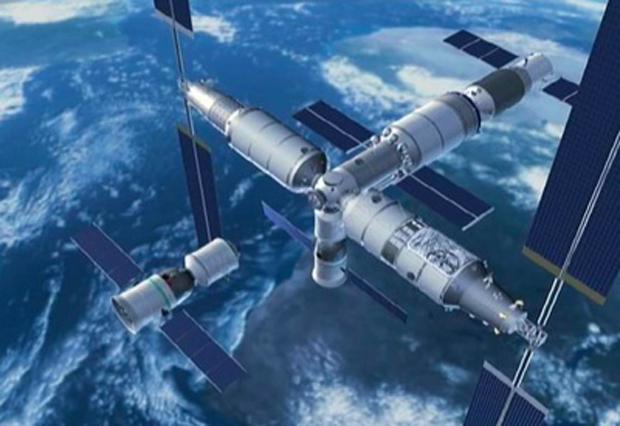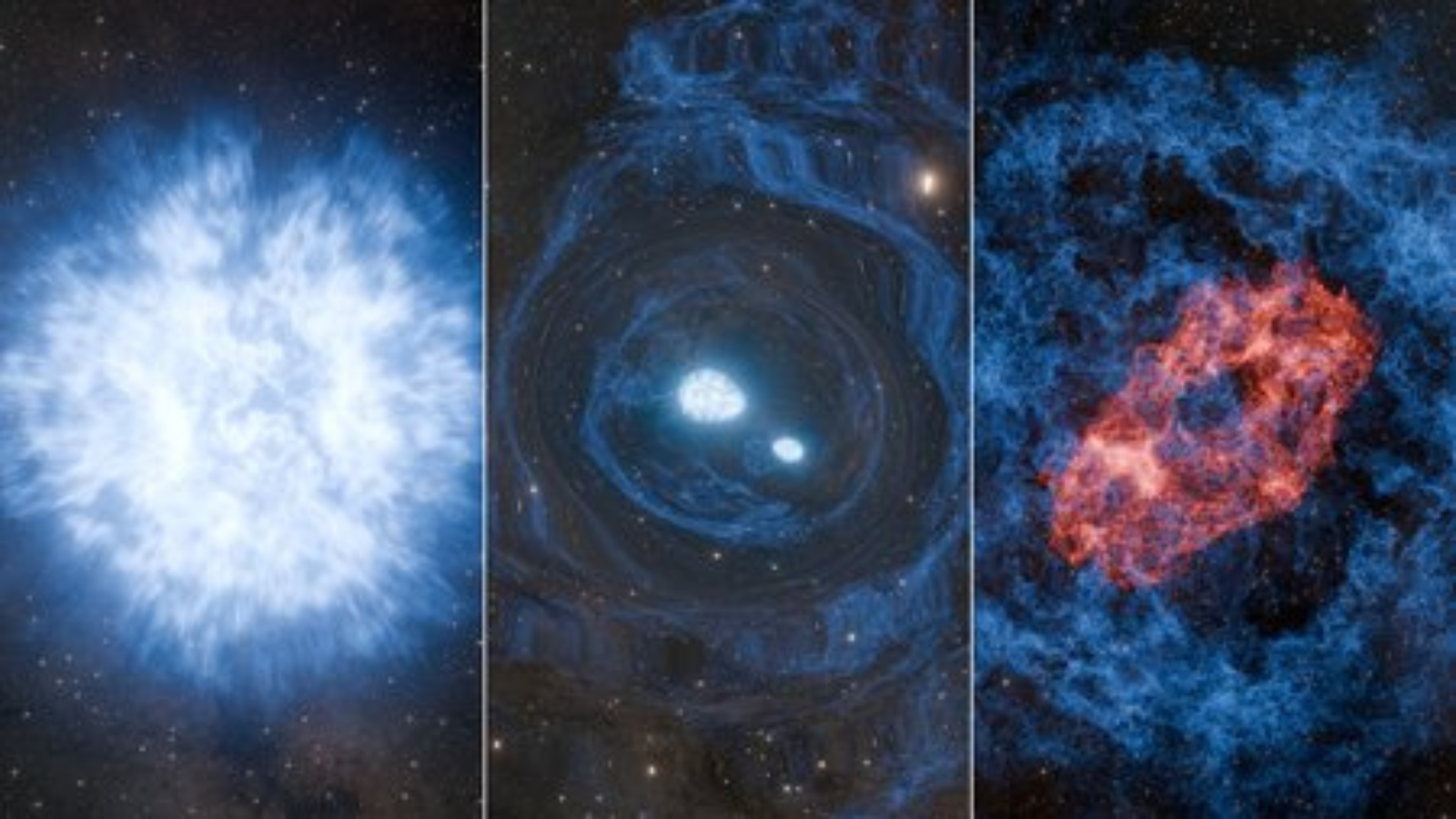China's Space Station Planners Put Out Welcome Mat

JERUSALEM — China is soliciting international participation in its future manned space station in the form of foreign modules that would attach to the three-module core system, visits by foreign crew-transport vehicles for short stays and the involvement of non-Chinese researchers in placing experiments on the complex, the chief designer of China's manned space program said Oct. 12.
But he declined to commit to an international orbital docking technology that would facilitate international participation in the Chinese facility.
The Chinese orbital station, consisting of a core module and two experiment-carrying modules, can be expanded to a total of six modules if international partners want to invest in their own components, said Zhou Jianping, chief designer of the China Manned Space Program at the China Manned Space Agency. [China's First Full Space Station in Pictures]
Addressing the 66th International Astronautical Congress (IAC) here, Zhou said the station will have a nominal crew of three, with a maximum capacity of six, with three-member crews being launched aboard Chinese Long March 2F rockets from the Jiuquan spaceport for missions of up to six months.
China has signed initial space station cooperation agreements with the Russian and European space agencies, and while the European Space Agency has begun training astronauts in Chinese, there is no specific plan yet to send astronauts to the Chinese facility.
The core module of the Chinese station is scheduled for launch in 2018, Zhou said. Crew-carrying Chinese capsules will visit the module before the two experiment modules are added to complete the initial station design.
"Work is well under way," said Zhou, whose education includes time at the University of Southern California. "All the modules and associated vehicles are under development."
Breaking space news, the latest updates on rocket launches, skywatching events and more!
If the current schedule holds – he gave no indication of any financing or technical roadblocks – the station would be ready for full operations "around 2022," he said.
One of the interesting features of the Chinese space station is that it will be served from two of China's four spaceports.
The cargo modules will be launched aboard Chinese 5B rockets from the Hainan spaceport in southern China, at 19 degrees north latitude. Pressurized and unpressurized cargo will be launched aboard Long March 7 rockets, also from Hainan.
But China's Shenzhou crew-transport vehicle is launched from the Jiuquan launch facility at 41 degrees north latitude, in the Gobi Desert of Inner Mongolia.
The station will operate for 10 years or more, at an altitude of 340-450 kilometers with an orbital inclination of 42-43 degrees relative to the equator.
The International Space Station managed by the United States, Russia, Europe, Japan and Canada, operates in low Earth orbit of around 400 kilometers in altitude, with an orbital inclination of 51.6 degrees, an accommodation to Russia, whose Baikonur spaceport in Kazakhstan is at 46 degrees north latitude.
Zhou said China plans to launch an astronomy telescope into an orbit near enough to the space station to dock to it for upgrades and servicing. He declined to specify the telescope's size.
Zhou also declined to say whether China's station would use a technical standard being developed in Europe and the United States that would facilitate future interoperability of orbital stations through common docking technologies.
The annual IAC conferences are routinely filled with commitments to international collaboration from national space agencies. A common docking standard is one of the few concrete examples of progress in this respect. A Chinese refusal to adopt it – Zhen said his office would need to assure its quality – would send a signal about China's intentions with international partners.
The Russian space agency, Roscosmos, has said it wants to maintain the current space station until at least 2024. NASA has said likewise, and both have said the facility could last until 2028 given the current understanding of hardware obsolescence and future maintenance requirements of the core structure.
European Space Agency Director-General Johann-Dietrich Woerner said here Oct. 12 that ESA, which has made a de facto commitment to the station to 2020, would like to extend that to 2024.
Woerner said his agency wants an extended space station participation to be tied to a longer-term barter agreement with NASA. The current agreement allows ESA to pay for its 8.3 percent share of the station's common operating costs not in cash to NASA, but in provision of the service module for NASA's future Orion crew-transport vehicle.
Under the current NASA-ESA agreement, ESA will provide a full service module for one Orion flight, and hardware for a second flight. The two sides have yet to negotiate an agreement that would make European industry the supplier of service modules beyond the first flight.
The Japan Aerospace Exploration Agency, JAXA, has not yet been given clear indications from the Japanese government about whether Japan will maintain its space station participation to 2024.
JAXA President Naoki Okumura said Japan's Ministry of Education,Culture, Sports, Science & Technology, which control's JAXA's budget, has proposed a 2024 commitment to Japan's parliament. A decision is expected in early 2016, he said.
This story was provided by SpaceNews, dedicated to covering all aspects of the space industry.
Peter B. de Selding is the co-founder and chief editor of SpaceIntelReport.com, a website dedicated to the latest space industry news and developments that launched in 2017. Prior to founding SpaceIntelReport, Peter spent 26 years as the Paris bureau chief for SpaceNews, an industry publication. At SpaceNews, Peter covered the commercial satellite, launch and international space market. He continues that work at SpaceIntelReport. You can follow Peter's latest project on Twitter at @pbdes.

